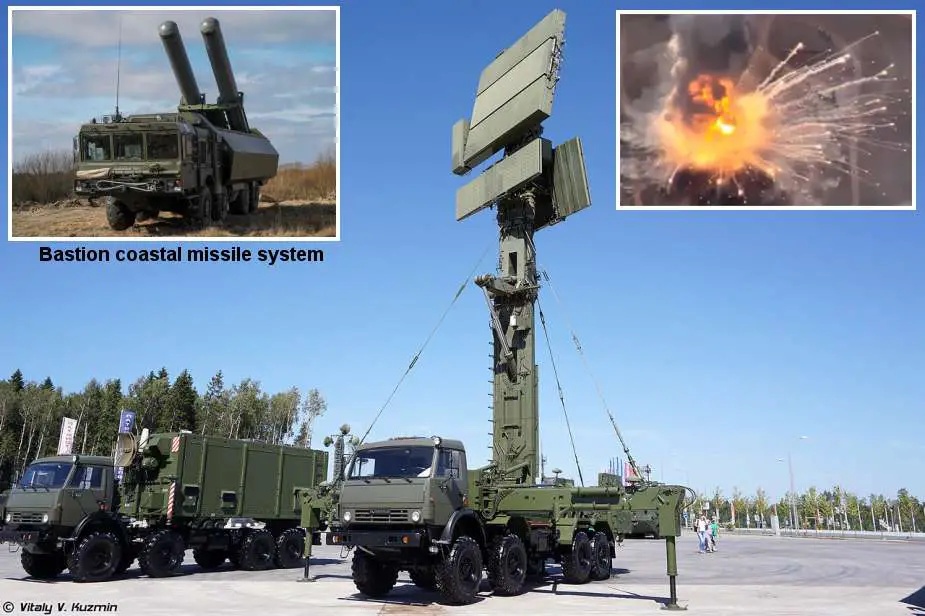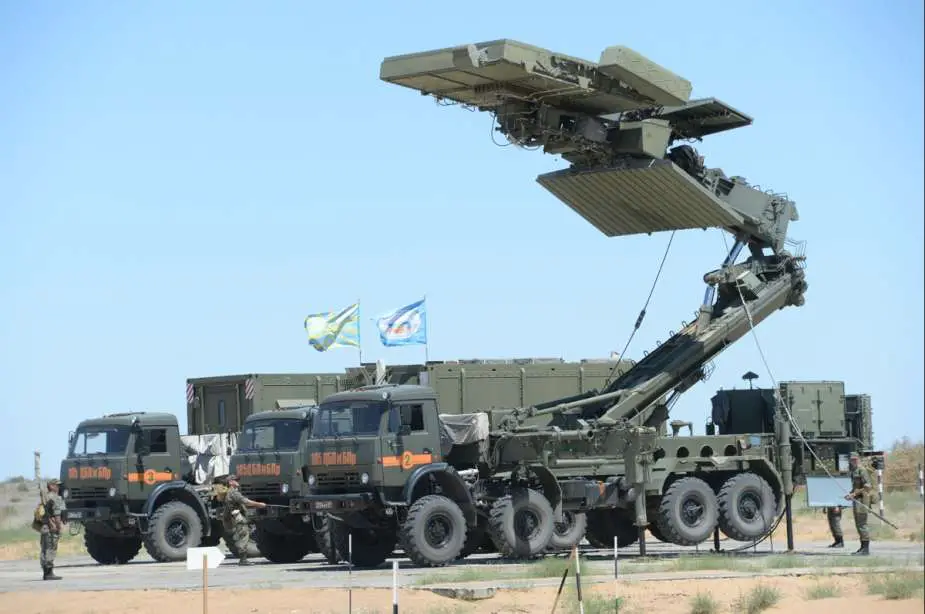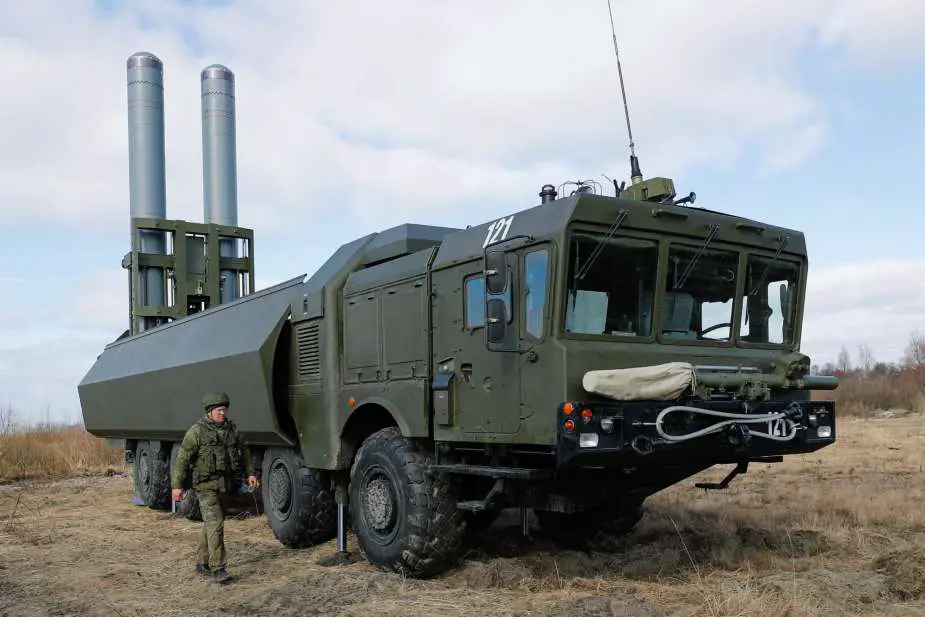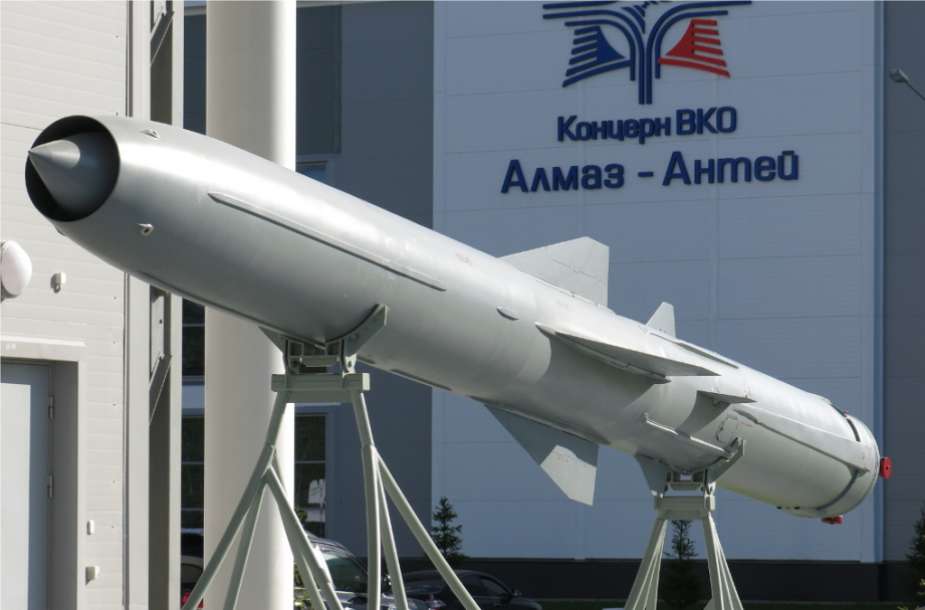- Army
- Conflicts in the world
- Israel - Iran conflict 2025
- Pakistan - India Conflict 2025
- Russia Ukraine War 2022
- Libya conflict day by day
- HAMAS - Israel War 2023
- Operation Serval in Mali French Army
- Sangaris operation Central African Republic
- Sangaris opération militaire République Centreafrique
- Ukraine - Russia conflict
- Syria conflict news
- Defence & Security Industry Technology
- Armies in the world
- Analysis Defense and Security Industry
- Conflicts in the world
- Navy
- Air
Ukrainian Forces destroys crucial Russian air defense and coastal systems in Crimea
According to a tweet by Clash Report on August 23, 2023, Ukrainian Armed Forces' strikes reportedly targeted Russian radar stations in Olenivka, Crimea. Earlier reports suggest that both a Podlet-K1 low-altitude surveillance radar used with the S-400 air defense system and a Bastion coastal missile system were also hit, damaged, or destroyed. Ukraine’s Military Intelligence (GUR) later shared footage confirming the destruction of these systems.
Follow Army Recognition on Google News at this link

Ukraine Armed Forces destroyed an S-400 air defense system and a Bastion-P coastal missile system in Crimea (Picture sources: Clash Report/Twitter, Vitaly Kuzmin and Yandex)
Local witnesses reported hearing seven explosions and observing smoke. Authorities governing the occupied region have refrained from providing comments, a trend increasingly observed in Russia when critical military equipment sustains damage or is destroyed. On the other hand, the Ukrainian military intelligence service (GUR) subsequently just released video footage confirming the destruction of these systems, including the S-400 launcher.
The Podlet-K1, formally known as the 48Ya6-K1, is a mobile solid-state three-coordinate radar station designed for monitoring at low altitudes. Outfitted with a circular scan phased-array radar (ФАР), this radar configuration is intended to detect airborne objects flying at low and extremely low altitudes, even amidst complex interference scenarios. Developed by the Russian defense company "Almaz-Antey," the radar's primary objective is to furnish target designation for surface-to-air missile systems like the S-300, S-400, and similar platforms. The development process commenced around 2009, followed by state trials in 2010. Distribution of the "Podlet-K1" radar system to the Russian Air Defense Forces commenced in 2015.
The radar system boasts various capabilities, including automated target identification and coordinate determination. It can track diverse aerodynamic targets, including those that are particularly challenging to detect and ascertain the origin of the detected targets. The system's design aims to communicate target information to surface-to-air missile systems and fighter aircraft.
The radar system's operation encompasses multiple modes to suit different operational contexts. Its primary function is the low-altitude detection mode, used to gather tracking or coordinate information about targets operating at low and extremely low altitudes. Additionally, the system offers modes for medium-altitude and long-range detection, alongside a specialized mountain mode for application in mountainous terrains.

The Podlet-K1 low-altitude surveillance radar frequently used with an S-400 air defense system (Picture source: Yandex)
The complex comprises various components, including an antenna post mounted on a KAMAZ chassis, a control cabin (kung) also affixed to a KAMAZ chassis, and an electric generator situated on a KAMAZ chassis.
Operated within a centimeter wavelength frequency range, the Podlet-K1 radar system can simultaneously detect up to 200 targets. It has a detection range of 10 to 200 km (expandable to 10 to 300 km in an extended mode) and can identify targets at a maximum altitude of 10 km. The radar provides full 360-degree azimuthal coverage and an elevation angle spanning from -2 to +25 degrees (or from -7 to +12 degrees in an extended mode). The system can determine target coordinates with accuracy, offering a range precision of 200 meters and an azimuth precision of 1.6 degrees. The radar's scanning interval can be configured to 5 or 10 seconds, and it offers a suppression ratio of 50 dB for local object reflections. Deployment or folding of the complex takes approximately 20 minutes.
The Bastion-P coastal missile system was conceived by the Scientific Production Association of Mechanical Engineering and became operational in 2010. The Bastion system's primary focus is countering a range of surface ships, enhancing coastal defense against naval threats.
The coastal missile complex consists of diverse components contributing to its operational capability. These encompass SPU K340P self-propelled launchers, MBU K380P combat control vehicles, equipment for technical interfacing, an automated combat control system (ASBU), maintenance facilities, TZM K342P transport-loading vehicles, combat duty support vehicles, an educational and training complex, and a helicopter target designation complex. Moreover, the complex can integrate a self-propelled over-the-horizon radar system called "Monolith-B" for target detection.

The Bastion-P coastal missile system (Picture source: Yandex)
The standard Bastion-P configuration, denoted as K-300P, typically includes four self-propelled launchers (K-340P). Each launcher houses two transport-launching cups designed to accommodate "Yakhont" missiles. These launchers are mounted on the MZKT-7930 chassis and operated by a three-person crew. The division also incorporates 1 to 2 combat control vehicles (ASBU), 1 combat duty support vehicle (MOBD), and 4 transport-loading vehicles (TZM K342P).
Prominent features of the Bastion-P coastal missile complex encompass mobility and adaptability, facilitating maneuvering and discreet deployment. These attributes prove advantageous for navigating anti-aircraft defense zones and engaging both naval and ground-based targets.
The Bastion system's practical application was observed during active duty deployment to Syria in 2016. Throughout this deployment, the system effectively engaged naval and ground threats, showcasing its capabilities.
The principal offensive component of the Bastion-P coastal missile complex is the P-800 "Oniks" missile, also recognized as "Yakhont." This hypersonic missile is tailored for targeting surface ships due to its extensive firing range and swift missile velocities. Boasting a maximum firing range of 300 kilometers and missile speeds ranging from 680 to 750 meters per second, the Oniks missile executes a full 360-degree rotation post-launch, enabling engagement of diverse threats. The system can launch up to 12 missiles concurrently via six launchers.
The P-800 Oniks, also referred to as "Yakhont" for export, is a medium-range anti-ship missile developed in the late 1970s by the TsKBM MOM design bureau in the Soviet Union. Engineered to engage naval groups, individual ships, and ground targets amid intense fire and electronic countermeasures, the Oniks differs from previous designs, featuring enhanced deployment options suitable for submarines, surface ships, aircraft, boats, and coastal launchers.
The missile integrates both a solid propellant rocket engine (RDTT) for initial acceleration and a ramjet engine within the combustion chamber for sustained propulsion. This dual propulsion setup enables the missile to achieve high supersonic velocities, bolstering its efficacy against targets.

The Oniks supersonic anti-ship missile used by the Bastion-P coastal missile system (Picture source: Wikimedia)
The technical specifications of the 3M55 version (Oniks) encompass an approximate length of 8 meters for the ship version and 6.1 meters for the aviation version, a diameter of 0.67 meters, and a wingspan of 1.7 meters. The missile weighs approximately 3000 kg at launch and 3900 kg with its rocket engine. It can attain a maximum speed of around 884 m/s (equivalent to Mach 2.6 = 3,182 km/h). The missile's propulsion system involves a solid fuel starting and accelerating stage, alongside a kerosene T-6-fueled ramjet engine.
Covering up to 300 km along a combined trajectory, the missile can fly at altitudes of up to 14,000 meters during the march phase, descending to 10-15 meters during the final approach. The control system utilizes an inertial + radio altimeter combination during the march phase, transitioning to an all-weather monopulse active-passive radar guidance system (RLGSN) in the final stage. The target detection range extends to a minimum of 50 km in active mode, and the missile's warhead weighs 300 kg.
The Oniks missile system presents several benefits, including over-the-horizon firing capability, fire-and-forget functionality, adaptable trajectory options, high supersonic speeds, and compatibility with diverse carriers such as surface ships, submarines, and ground launchers. It also demonstrates effectiveness against electronic countermeasures.
In 2019, an upgraded version of the missile, the 3M55M Oniks-M, was introduced. This iteration boasts enhanced accuracy against surface and ground targets, an extended maximum range of up to 800 km, and improved resistance to electronic warfare. While the Oniks missile has not been employed in combat against ships, its high supersonic speeds and advanced guidance systems suggest challenges for interception endeavors.


























